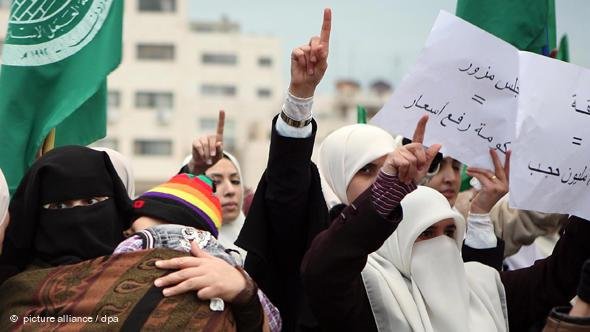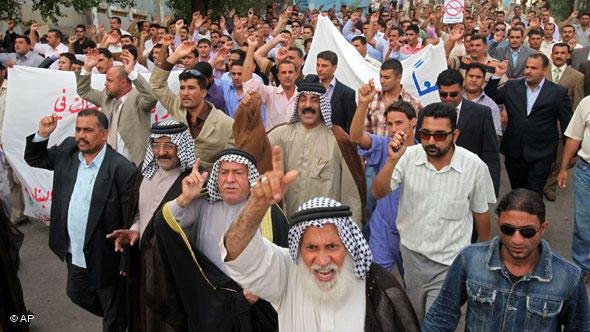The Collapsing Arab State
The so-called Arab Spring generated a wave of hope among those fighting or advocating for democratization of the Arab world's authoritarian regimes. Now, following leadership changes in Tunisia, Egypt, Libya, and Yemen, and with a brutal civil war raging in Syria and increasingly fraught conditions in Bahrain, Sudan, Jordan, and Iraq, there is much talk of a major shift – and hope for improvement – in the nature and prospects of the Arab state.
But hope – "the thing with feathers", as the American poet Emily Dickinson put it – often bears little resemblance to realities on the ground. Indeed, looking earthward, the beauty of the Arab Spring seems to have given way to an almost unbearable winter.
For all the optimism ushered in two years ago, ominous political realities may be rendering the nation-state system incompatible with the emerging new Arab world. As a result, how the region can maintain stability without stable nation-states is becoming a burning question.
Integral components of a successful nation-state
Admittedly, Arab countries' problems vary by degree and type. Some countries, such as Egypt and Tunisia, have historically entrenched institutions to help steer the post-conflict institution-building process and prevent a complete collapse of the state.

Others, like Bahrain and Jordan, appear to be relatively stable. But most are experiencing disastrous output contractions amid severe fiscal constraints and nearly collapsed monetary systems, thus undermining two integral components of a successful nation-state: economic independence and self-sustaining growth.
Moreover, each country has elected leaders (or widely supported rebels) with ties to the pan-Arab revolutionary Islamist Muslim Brotherhood (or, in the case of Bahrain, to Iran's revolutionary Islamist objectives). They are thus subject to a religious ideology that transcends the nation-state, rather than to organizations with viable plans for social stability, economic prosperity, and political security within national borders.
The vulnerability that this implies already has resulted in Sudan's recent disintegration into two states. Sudan's authoritarian rule and social division along religious lines, together with economic difficulties and political ineptitude, precipitated the collapse of the central government's authority in the country's Christian-majority south.
Iraq's central authority eroding
The same process appears to be playing out, albeit at a slower pace, in Iraq, amid an ongoing struggle to unite two ethnicities, Arabs and Kurds, as well as adherents of Sunni and Shia Islam, into a single nation-state. Central authority is gradually eroding as the country continues to splinter into ethnic and sectarian regions, with a de facto Kurdish sovereign state already well established in the north.
Meanwhile, in Yemen, the possibility of adequate central authority is slipping away as the country confronts several seemingly intractable problems – from internal divisions and separatist movements to Al Qaeda's franchise in the Arabian Peninsula and a failing economy. The south (Aden) and east (Hadramaut) are both on a trajectory toward independence, dragging Yemen toward another secession struggle nearly 25 years after the country's fragile unification.

In Libya, the collapse of Colonel Muammar el-Qaddafi's regime has thrown the country into chaos and decimated central-government authority. The south remains lawless, while the east is ruled by the Benghazi regional council; only the west remains subject to the poorly consolidated government in Tripoli.
The situation is even worse in Syria, where the bloodiest of the Arab revolutions has already claimed more than 75,000 lives, owing mainly to the behaviour of President Bashar al-Assad's tyrannical regime. As the Syrian state melts away, the regime's inevitable collapse will lead to the country's permanent dismemberment, bringing a de facto Kurdish state in the northeast, an eastern autonomous enclave for the surviving Alawites, and a southern entity for the Druze.
The cases of Bahrain and Jordan
While the Bahraini and Jordanian states have proven much more stable in relative terms, they are not immune to volatility. Certainly, the Shia revolt in Bahrain, hijacked by an opportunistic Iranian revanchist faction, has failed to foment the collapse of the Khalifa monarchy. And, in Jordan, the religious legitimacy of the Hashemite monarchy has sustained the state in the face of the growing challenge posed by the Muslim Brotherhood, while the fear of regional violence spilling over into the Kingdom has temporarily curbed the Jordanian public's appetite for rebellion.
But both states lack the domestic revenues needed to sustain their institutions. If they wish to survive well into the next century, they will probably need to be subsumed under a union supported by a larger, more powerful, and more established nation-state.
Furthermore, the disintegration that the region has already witnessed – and will undoubtedly continue to witness – will reverberate beyond the Arab map with the creation of a sovereign Kurdish state. Such a state, whether existing de facto or with widespread formal recognition, will have an ever-lasting effect on the boundaries of the Arab world (Syria and Iraq) and of the wider Middle East (Turkey and Iran).
The Arab Spring has toppled some regimes, though not others. But, more important, everywhere in the Arab world – and beyond – it has called into question the viability of the nation-state. The days of revolts may have passed; the days of reckoning lie ahead.
Nawaf Obaid
© Project Syndicate 2013
Nawaf Obaid is a visiting fellow at the Belfer Center for Science and International Affairs at Harvard University’s Kennedy School of Government.
This article is adapted from a longer report, "The Long Hot Arab Summer", published by the Belfer Center.
Qantara.de editor: Lewis Gropp
